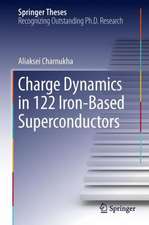Microelectronic Materials and Processes: NATO Science Series E:, cartea 164
Editat de R.A. Levyen Limba Engleză Hardback – 31 ian 1989
| Toate formatele și edițiile | Preț | Express |
|---|---|---|
| Paperback (1) | 3041.58 lei 6-8 săpt. | |
| SPRINGER NETHERLANDS – 31 ian 1989 | 3041.58 lei 6-8 săpt. | |
| Hardback (1) | 3048.20 lei 6-8 săpt. | |
| SPRINGER NETHERLANDS – 31 ian 1989 | 3048.20 lei 6-8 săpt. |
Din seria NATO Science Series E:
- 24%
 Preț: 1570.70 lei
Preț: 1570.70 lei -
 Preț: 397.76 lei
Preț: 397.76 lei -
 Preț: 386.81 lei
Preț: 386.81 lei - 20%
 Preț: 346.24 lei
Preț: 346.24 lei -
 Preț: 424.33 lei
Preț: 424.33 lei - 18%
 Preț: 1224.18 lei
Preț: 1224.18 lei - 18%
 Preț: 1836.63 lei
Preț: 1836.63 lei - 18%
 Preț: 1229.28 lei
Preț: 1229.28 lei -
 Preț: 381.00 lei
Preț: 381.00 lei -
 Preț: 409.30 lei
Preț: 409.30 lei - 18%
 Preț: 1841.36 lei
Preț: 1841.36 lei - 5%
 Preț: 367.28 lei
Preț: 367.28 lei -
 Preț: 407.19 lei
Preț: 407.19 lei - 18%
 Preț: 1838.38 lei
Preț: 1838.38 lei -
 Preț: 420.28 lei
Preț: 420.28 lei -
 Preț: 399.29 lei
Preț: 399.29 lei -
 Preț: 398.74 lei
Preț: 398.74 lei - 18%
 Preț: 3026.13 lei
Preț: 3026.13 lei -
 Preț: 388.90 lei
Preț: 388.90 lei - 5%
 Preț: 391.06 lei
Preț: 391.06 lei - 18%
 Preț: 1228.62 lei
Preț: 1228.62 lei - 18%
 Preț: 1229.73 lei
Preț: 1229.73 lei - 18%
 Preț: 1234.46 lei
Preț: 1234.46 lei - 5%
 Preț: 3532.05 lei
Preț: 3532.05 lei - 18%
 Preț: 1840.11 lei
Preț: 1840.11 lei - 5%
 Preț: 378.80 lei
Preț: 378.80 lei - 18%
 Preț: 1227.84 lei
Preț: 1227.84 lei -
 Preț: 392.75 lei
Preț: 392.75 lei -
 Preț: 395.63 lei
Preț: 395.63 lei - 18%
 Preț: 2489.30 lei
Preț: 2489.30 lei - 5%
 Preț: 1429.27 lei
Preț: 1429.27 lei -
 Preț: 396.02 lei
Preț: 396.02 lei - 5%
 Preț: 2142.61 lei
Preț: 2142.61 lei - 18%
 Preț: 3049.16 lei
Preț: 3049.16 lei - 18%
 Preț: 1844.54 lei
Preț: 1844.54 lei -
 Preț: 403.53 lei
Preț: 403.53 lei
Preț: 3048.20 lei
Preț vechi: 3717.32 lei
-18% Nou
Puncte Express: 4572
Preț estimativ în valută:
583.25€ • 609.03$ • 481.64£
583.25€ • 609.03$ • 481.64£
Carte tipărită la comandă
Livrare economică 15-29 aprilie
Preluare comenzi: 021 569.72.76
Specificații
ISBN-13: 9780792301479
ISBN-10: 0792301471
Pagini: 1000
Ilustrații: 1000 p.
Greutate: 1.56 kg
Ediția:1989
Editura: SPRINGER NETHERLANDS
Colecția Springer
Seria NATO Science Series E:
Locul publicării:Dordrecht, Netherlands
ISBN-10: 0792301471
Pagini: 1000
Ilustrații: 1000 p.
Greutate: 1.56 kg
Ediția:1989
Editura: SPRINGER NETHERLANDS
Colecția Springer
Seria NATO Science Series E:
Locul publicării:Dordrecht, Netherlands
Public țintă
ResearchCuprins
1 Silicon Crystal Growth.- 1.1 Introduction.- 1.2 Growth Characteristics.- 1.3 Impurity Incorporation.- 1.4 Trends in Large-Diameter Silicon Growth.- 1.5 Conclusions.- 2 Silicon Epitaxy.- 2.1 Introduction.- 2.2 EPI Equipment.- 2.3 Deposition.- 2.4 Doping.- 2.5 Autodoping.- 2.6 Pattern Shift.- 2.7 Defects.- 2.8 EPI Characterization.- 2.9 Conclusions.- 3 Silicon Oxidation.- 3.1 Introduction.- 3.2 Oxide Formation.- 3.3 Silicon Dioxide Properties.- 3.4 Conclusions.- 4 Physical Vapor Deposition.- 4.1 Introduction.- 4.2 Deposition Methods.- 4.3 Alloys and Compounds.- 4.4 Film Properties.- 4.5 Conclusions.- 5 Chemical Vapor Deposition.- 5.1 Introduction.- 5.2 Some Basic Aspects of CVD.- 5.3 Types of CVD Processes.- 5.4 Production CVD Reactor Systems.- 5.5 Deposition of Various Materials for VLSI Device Fabrication.- 5.6 Conclusions.- 6 Dielectric Materials.- 6.1 Introduction.- 6.2 Dielectric and Insulator Materials and their Applications in VLSI Technology.- 6.3 Methods of Film Formation and Equipment.- 6.4 Vertical Insulation in VLSI Technology.- 6.5 High Temperature Interconductor Insulation.- 6.6 Low Temperature Intermetal Insulation.- 6.7 Over-Metal Passivation Layer.- 6.8 Conclusions.- 7 Properties and Applications of Suicides.- 7.1 Introduction.- 7.2 Properties.- 7.3 Formation of Suicides and their Processing.- 7.4 Process Stability of Silicides-Resistivity, Stress and Device Reliability.- 7.5 Limitations.- 7.6 Conclusions.- 8 Forefront of Photolithographic Materials.- 8.1 Introduction.- 8.2 Extending Positive Resist Performance in the UV Region.- 8.3 Negative Resist Materials Which Do Not Swell During Development.- 8.4 Image Reversal Techniques.- 8.5 Contrast Enhancing Materials (CEMs).- 8.6 Amplification in Photoresist Technology.- 8.7 Deep UV Resists.- 8.8 MultilevelResist Technology and Planarization.- 8.9 Bilayer Resist Processes.- 8.10 Gas-Phase-Functionalized Plasma-Developed Resists.- 8.11 Conclusions.- 9 Fine-Line Lithography.- 9.1 Introduction.- 9.2 Basic Fabrication Processes and Ultimate Resolution.- 9.3 UV Shadow Printing.- 9.4 X-Ray Lithography.- 9.5 Ion and Electron Beam Proximity Printing.- 9.6 Optical Projection.- 9.7 Scanning Electron Beam Lithography.- 9.8 Scanning Ion Beam Lithography.- 9.9 Conclusions.- 10 Dry Etching Processes.- 10.1 Introduction.- 10.2 RF Glow Discharges (Plasmas).- 10.3 Etching Considerations.- 10.4 Profile Control.- 10.5 Process Monitoring (Diagnostics).- 10.6 Other Dry Etch Techniques.- 10.7 Radiation Damage.- 10.8 Safety Considerations.- 10.9 Conclusions.- 11 Ion Implantation.- 11.1 Introduction.- 11.2 Ion Implanters.- 11.3 Range Distributions.- 11.4 Ion Damage.- 11.5 Annealing of Implanted Dopant Impurities.- 11.6 Ion Beam Annealing.- 11.7 Conclusions.- 12 Diffusion in Semiconductors.- 12.1 Introduction.- 12.2 Phenomenological Description.- 12.3 Point Defects and Atomistic Diffusion Mechanisms.- 12.4 Diffusion in Silicon.- 12.5 Diffusion in Germanium.- 12.6 Diffusion in Gallium Arsenide.- 12.7 Conclusions.- 13 Interconnect Materials.- 13.1 Introduction.- 13.2 Material and Process Requirements for VLSI Technology.- 13.3 Gate Metallization.- 13.4 Metal-Silicon Contacts.- 13.5 Interconnect Lines.- 13.6 Conclusions.- 14 Imperfection and Impurity Phenomena.- 14.1 Introduction.- 14.2 Imperfections and Impurities.- 14.3 Electrical Phenomena.- 14.4 Defect-Free Processing.- 14.5 Conclusions.- 15 Process Simulation.- 15.1 Introduction.- 15.2 Epitaxy.- 15.3 Ion Implantation.- 15.4 Diffusion.- 15.5 Lithography.- 15.6 Conclusions.- 16 Diagnostic Techniques.- 16.1 Introduction.- 16.2 Physical Backgroundof Diagnostic Techniques.- 16.3 Analytical Aspects of Diagnostic Techniques.- 16.4 Areas of Application of Diagnostic Techniques.- 16.5 Specific Features and Applications of the Different Methods.- 16.6 Conclusions.- 16.7 Explanation of Acronyms and Abbreviations.














